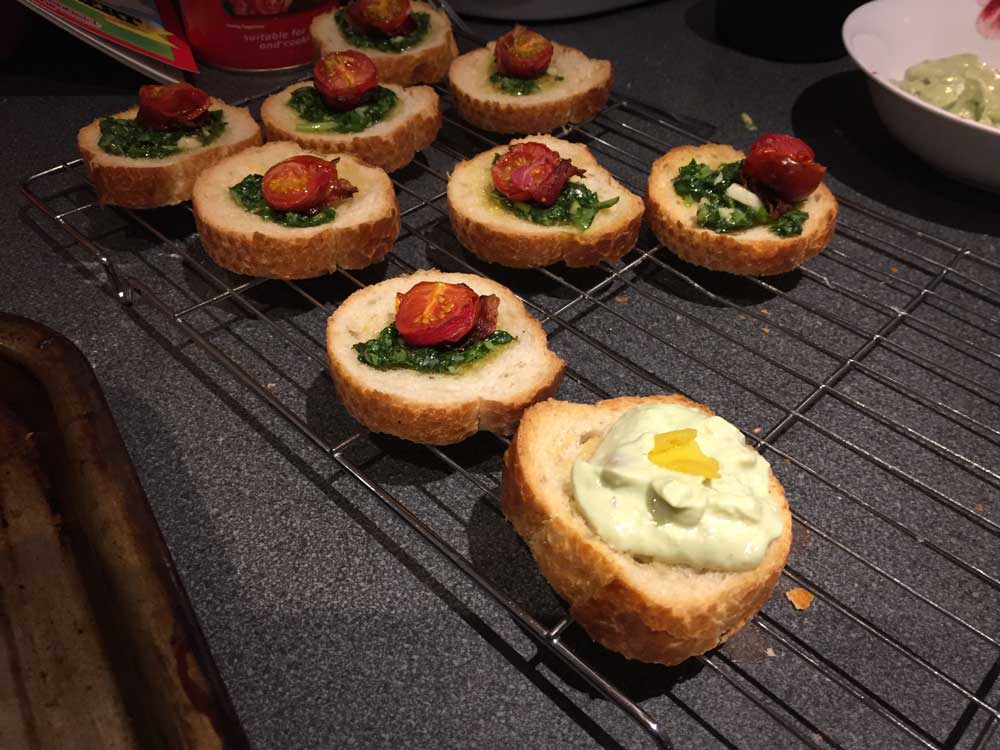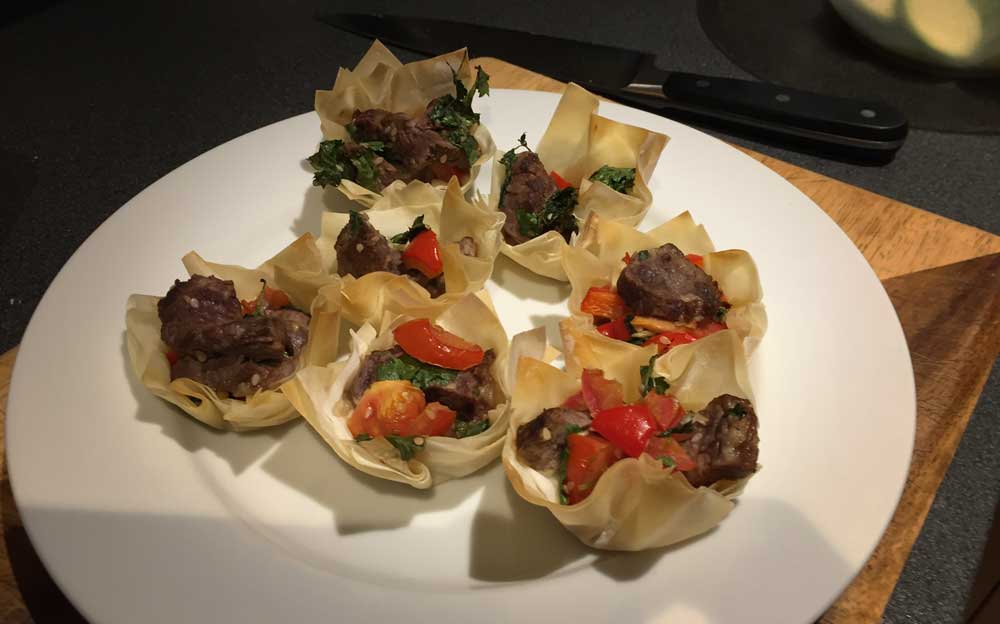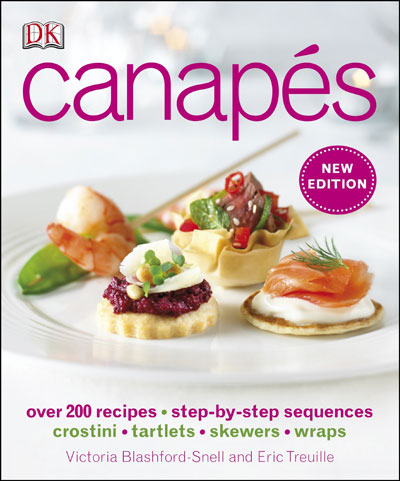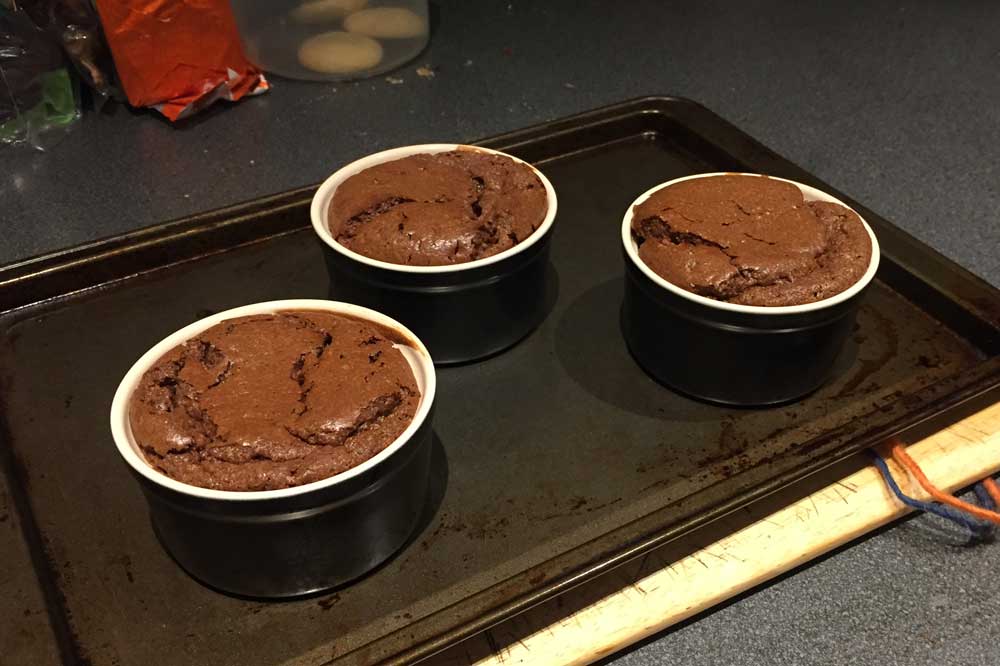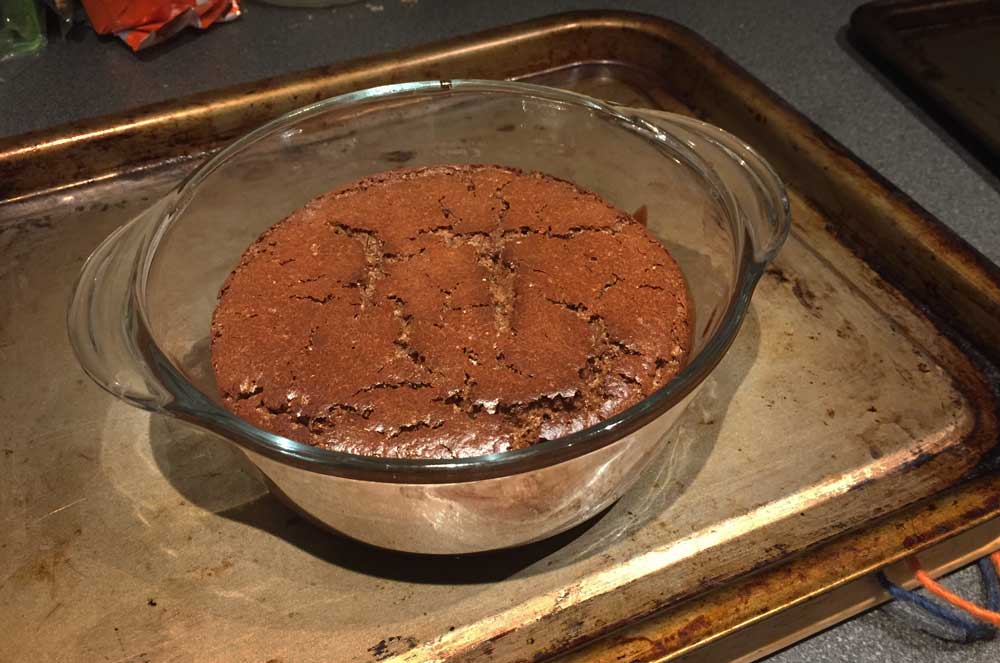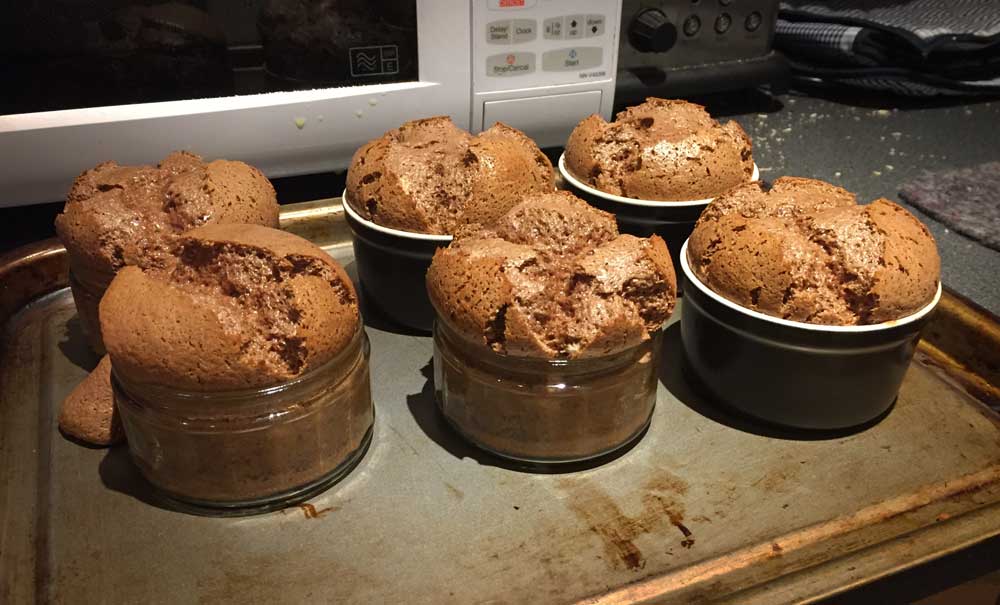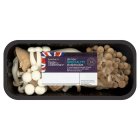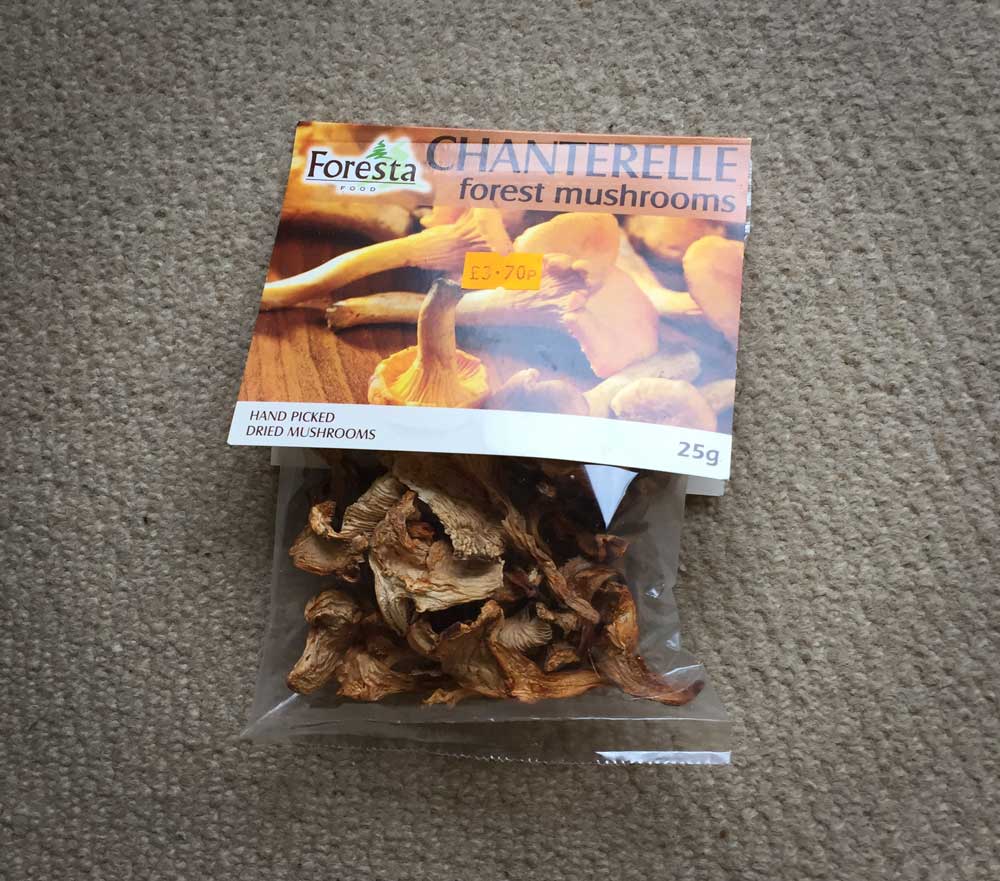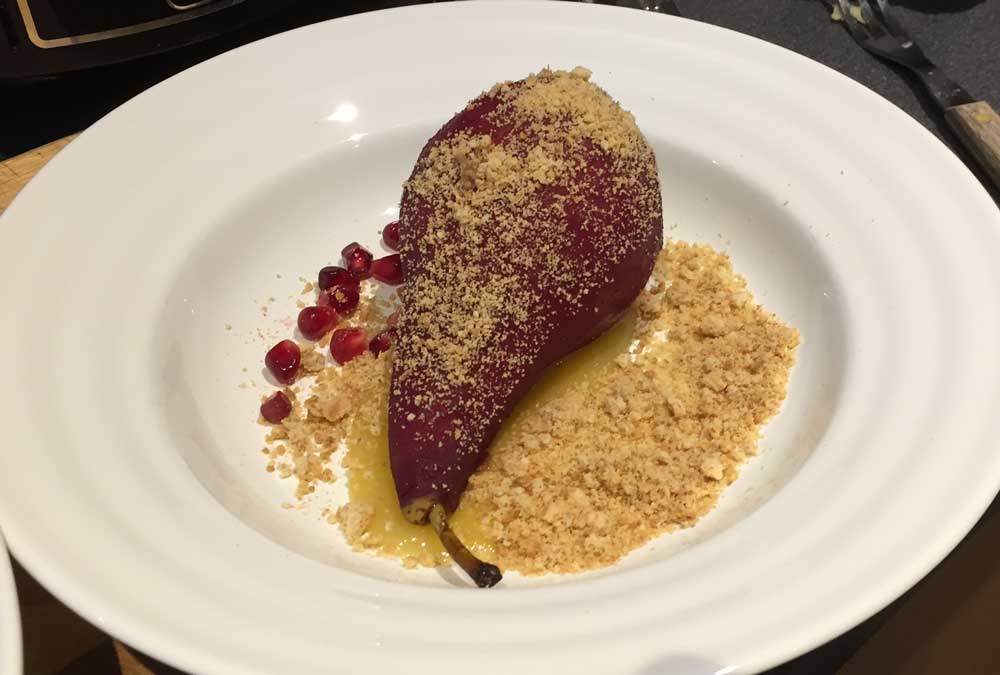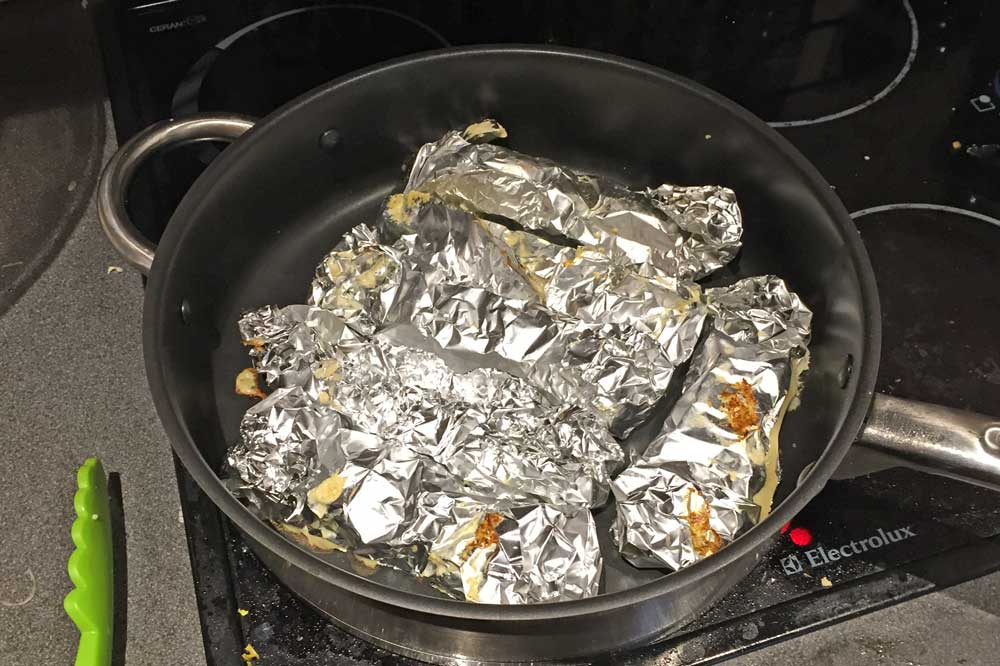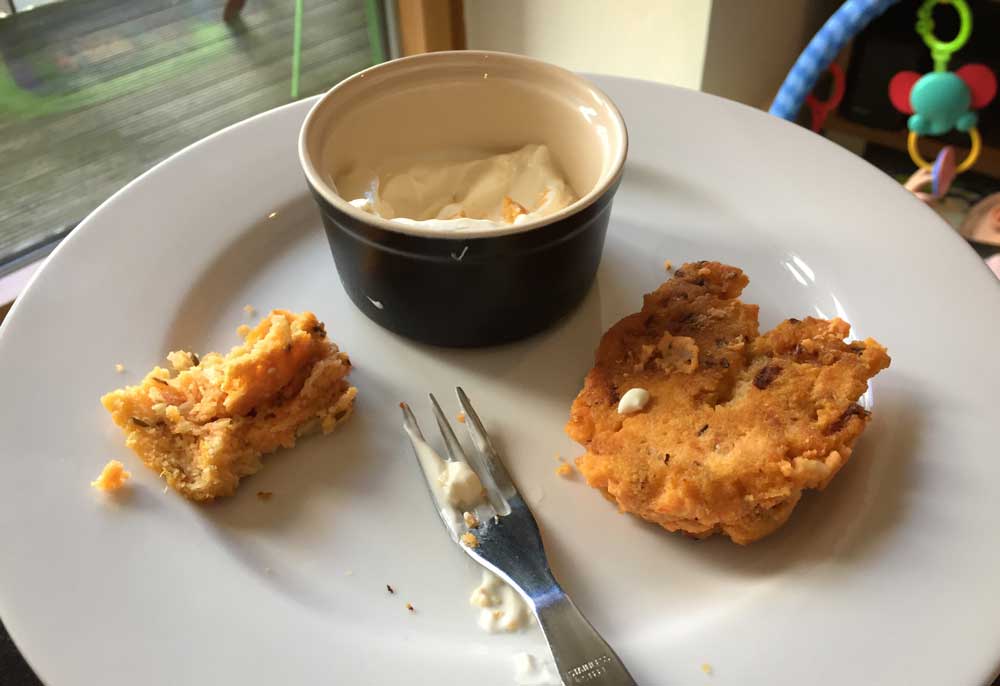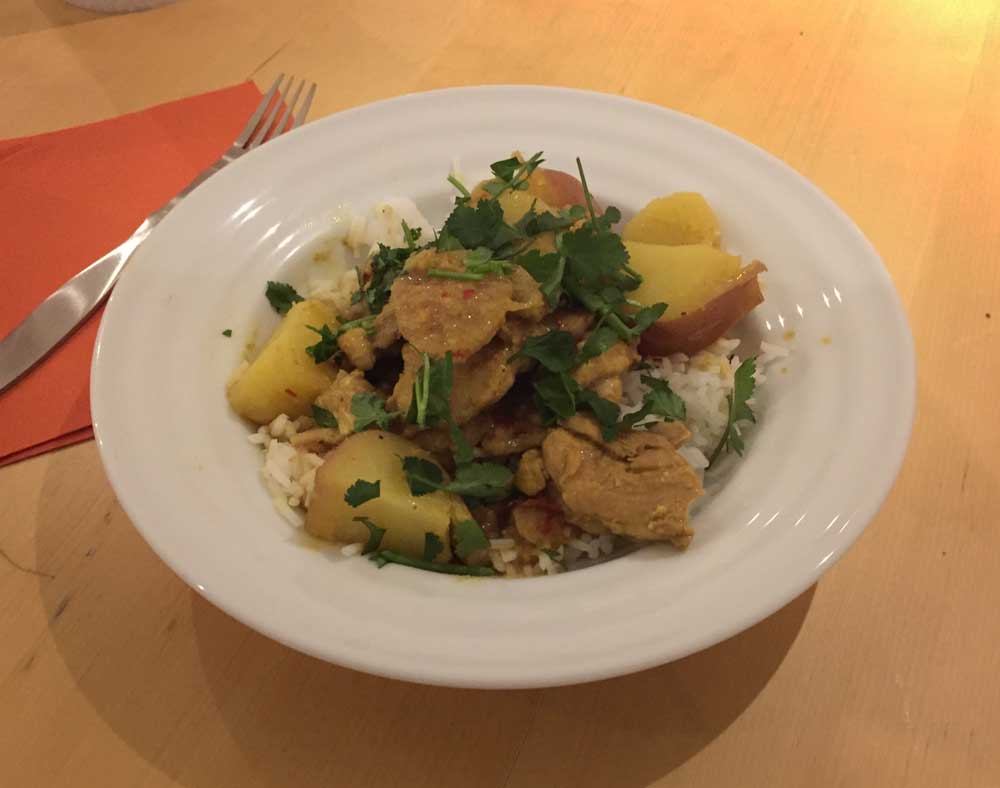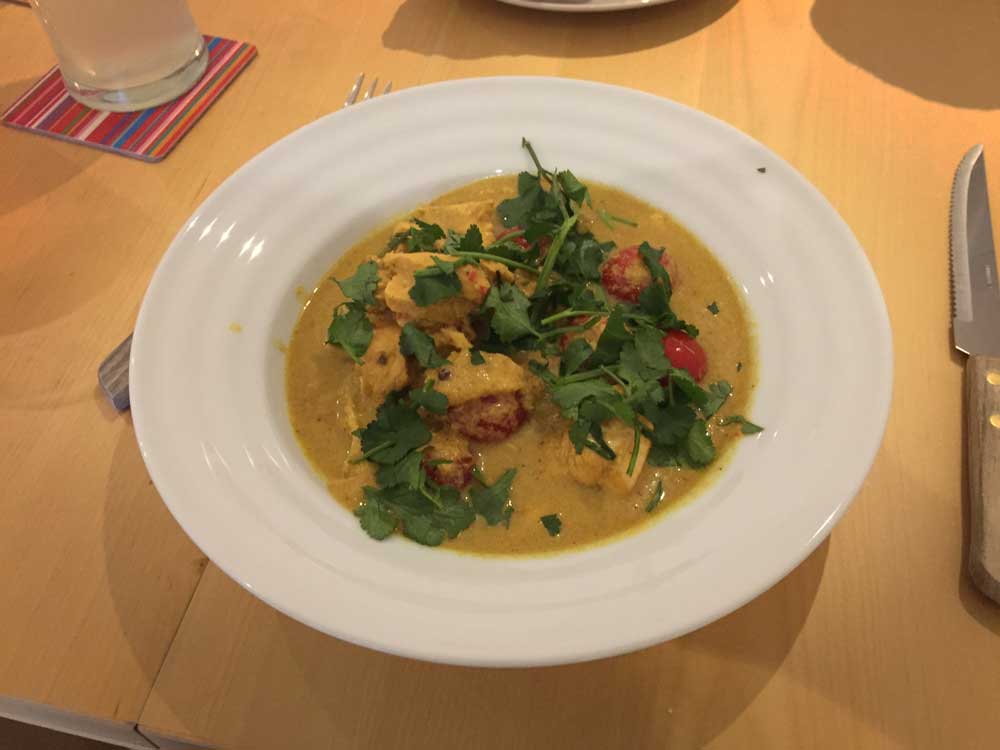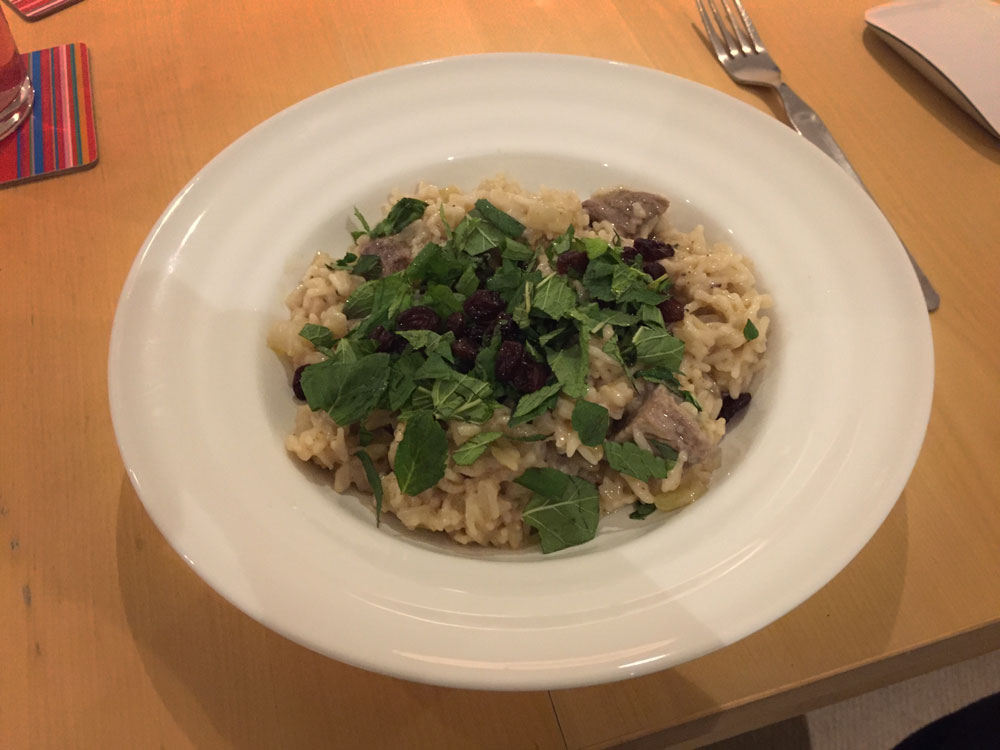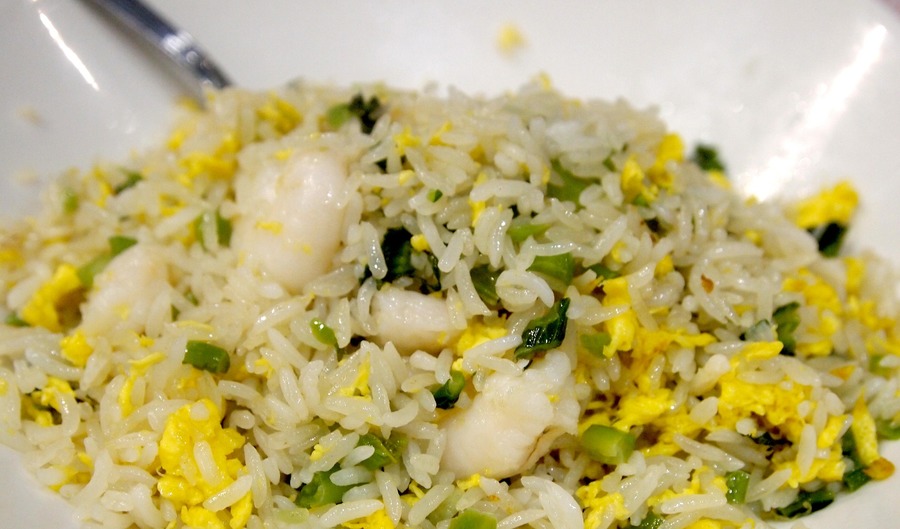Making food prettier
Wednesday, July 26th, 2017 | Food
Since finally giving in and watching MasterChef, I’ve been busy trying to up my game. Poaching pears, for example. And trying to make everything I put on a plate look a little prettier.
Results have been mixed.

This is pigeon breast, served with a sweet potato mash, with croutons, milk gel and chanterelles served two ways: fried and powered. The same ones we picked up in mushroom town, for reference.
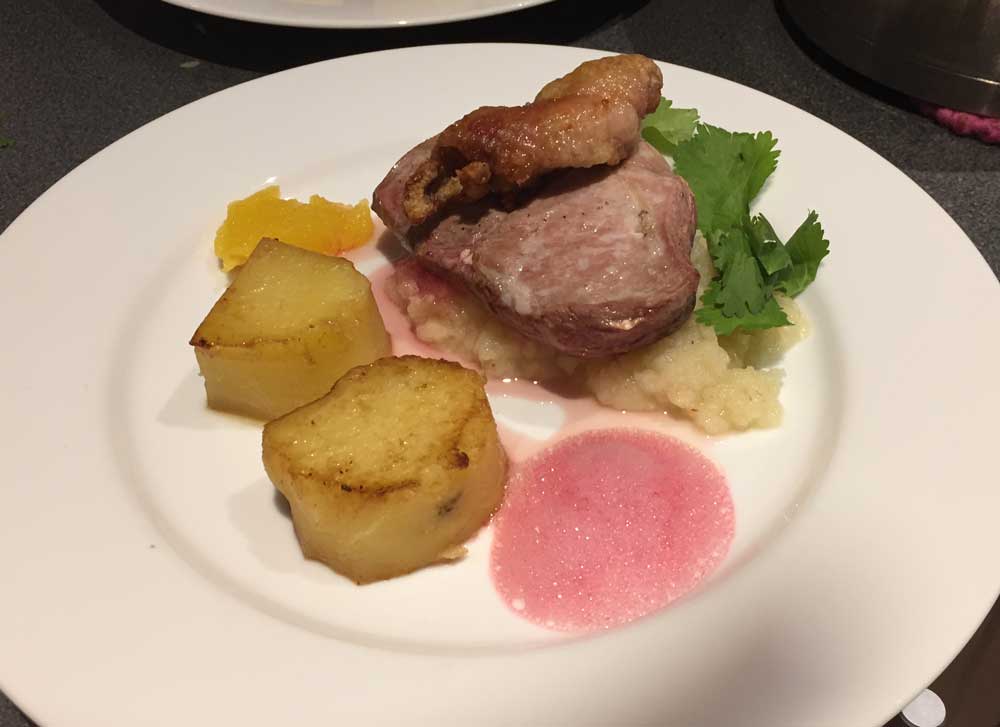
Here I have served duck with the skin cooked separately, on mash with an orange gel, fondant potatoes, cranberry foam and a dressing of parsley. There are definitely issues with this dish:
- My fondant potatoes are rather jagged. Do people use a cookie cutter to get perfectly round potatoes?
- The duck skin curled up while cooking. I scored it previous to this to try and prevent that, but without success.
- The cranberry foam was still quite liquidy, which rolled around the plate.
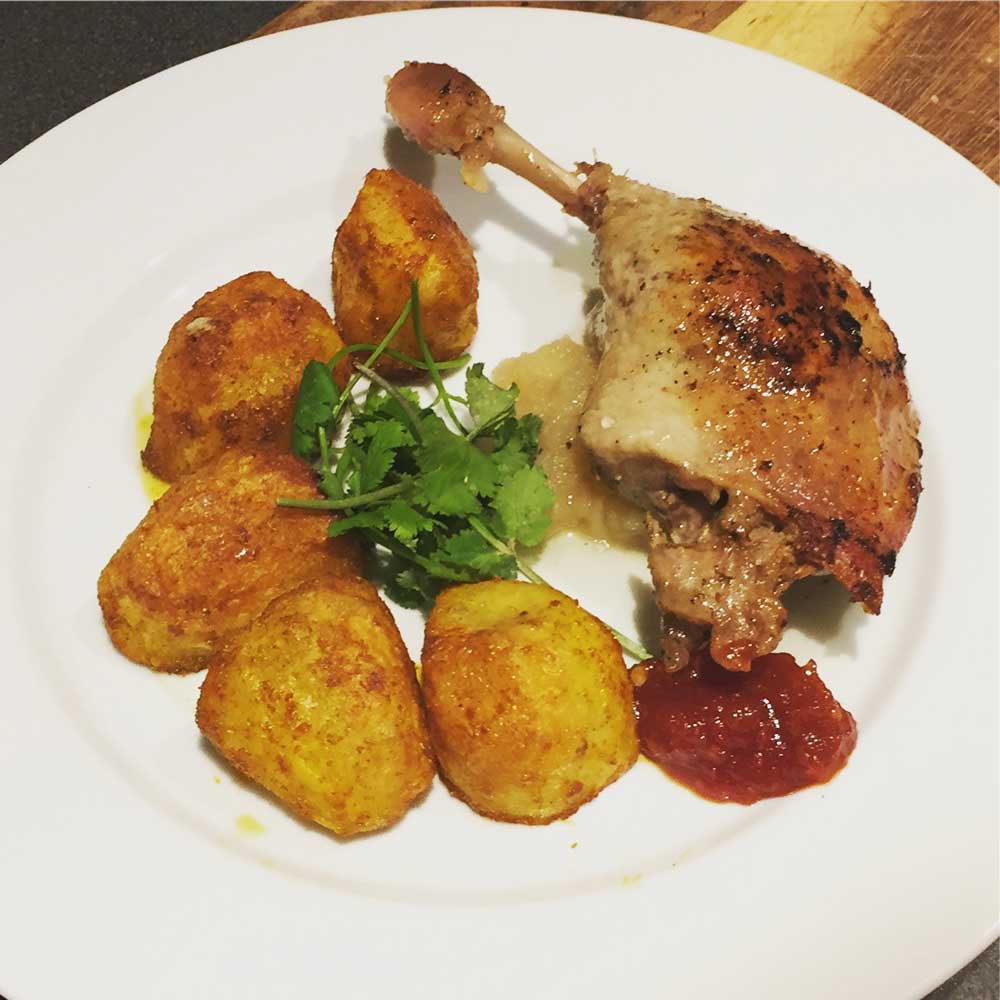
Confit duck on a bed of apple purée served with Asian roast potatoes, coriander and chilli jam.

Lamb leg with parsley, fried potato slices and peas. I like this one because it is simple: plain ingredients, not overcrowded or covered in fancy nonsense, but it still tastes good.
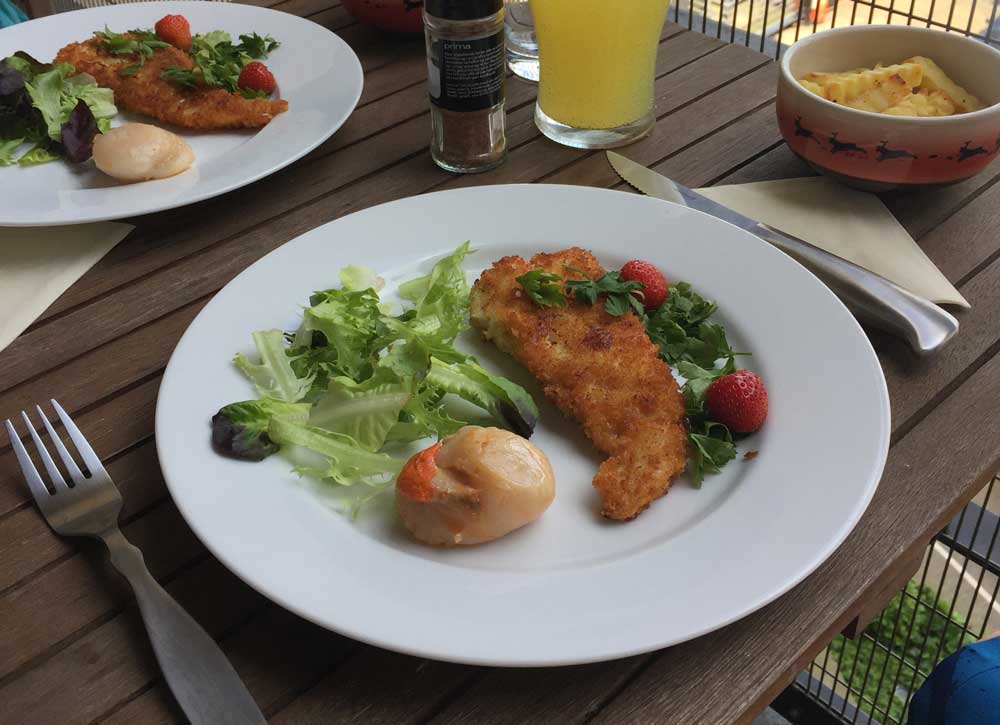
There are some weird combinations going on here. It’s fish and chips, with an added scallop, and some strawberries mixed in with the parsley. I served the chips in a separate bowl to avoid having to cram everything on to the plate.
Conclusion
A lot of the stuff just needs practice: mastering the different techniques, for example, is something I need to work on. But the big takeaway for me is to put less stuff on the plate. It is impossible to be elegant when you are trying to ram too much food on there.
Since finally giving in and watching MasterChef, I’ve been busy trying to up my game. Poaching pears, for example. And trying to make everything I put on a plate look a little prettier.
Results have been mixed.

This is pigeon breast, served with a sweet potato mash, with croutons, milk gel and chanterelles served two ways: fried and powered. The same ones we picked up in mushroom town, for reference.

Here I have served duck with the skin cooked separately, on mash with an orange gel, fondant potatoes, cranberry foam and a dressing of parsley. There are definitely issues with this dish:
- My fondant potatoes are rather jagged. Do people use a cookie cutter to get perfectly round potatoes?
- The duck skin curled up while cooking. I scored it previous to this to try and prevent that, but without success.
- The cranberry foam was still quite liquidy, which rolled around the plate.

Confit duck on a bed of apple purée served with Asian roast potatoes, coriander and chilli jam.

Lamb leg with parsley, fried potato slices and peas. I like this one because it is simple: plain ingredients, not overcrowded or covered in fancy nonsense, but it still tastes good.

There are some weird combinations going on here. It’s fish and chips, with an added scallop, and some strawberries mixed in with the parsley. I served the chips in a separate bowl to avoid having to cram everything on to the plate.
Conclusion
A lot of the stuff just needs practice: mastering the different techniques, for example, is something I need to work on. But the big takeaway for me is to put less stuff on the plate. It is impossible to be elegant when you are trying to ram too much food on there.

